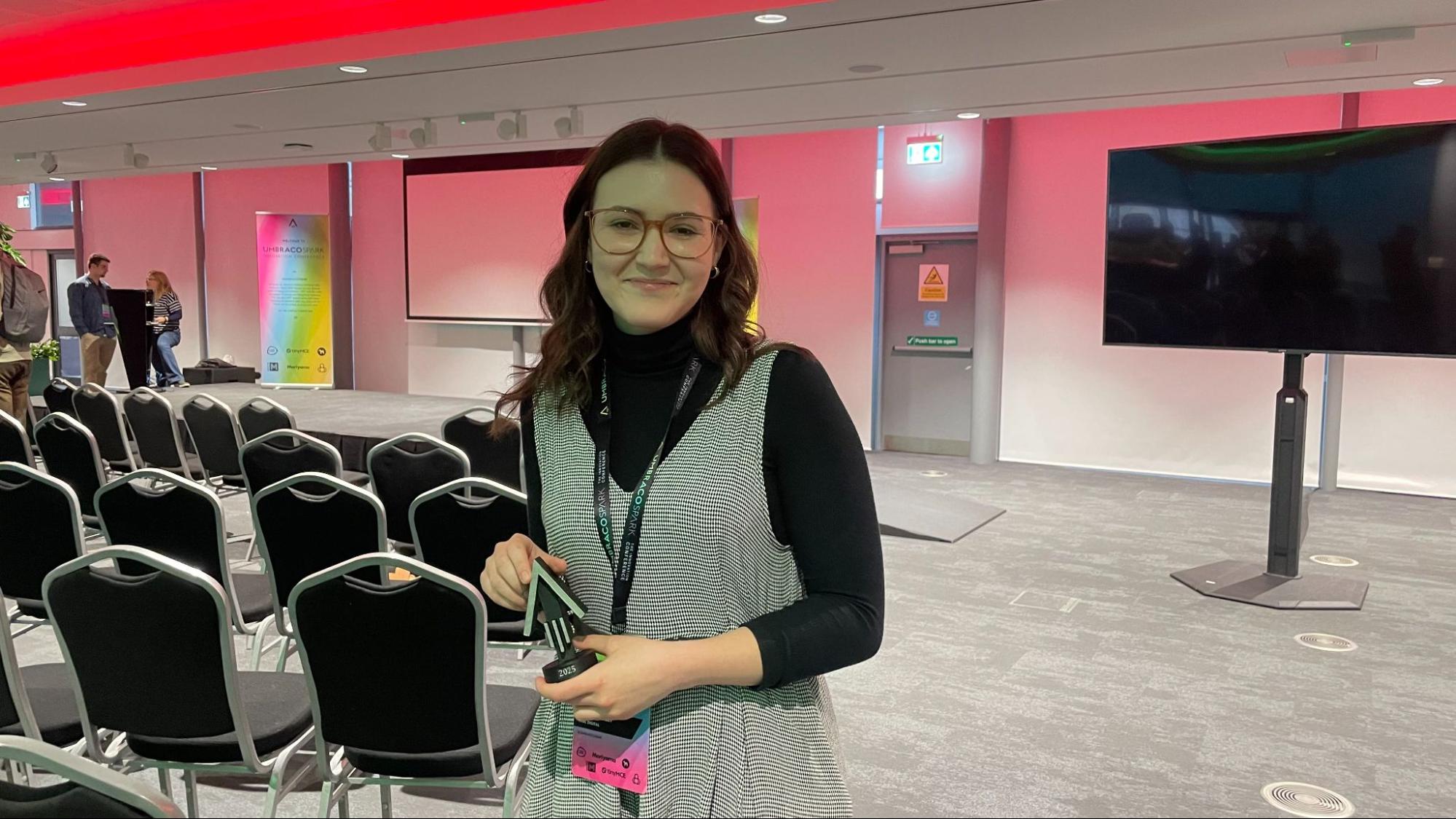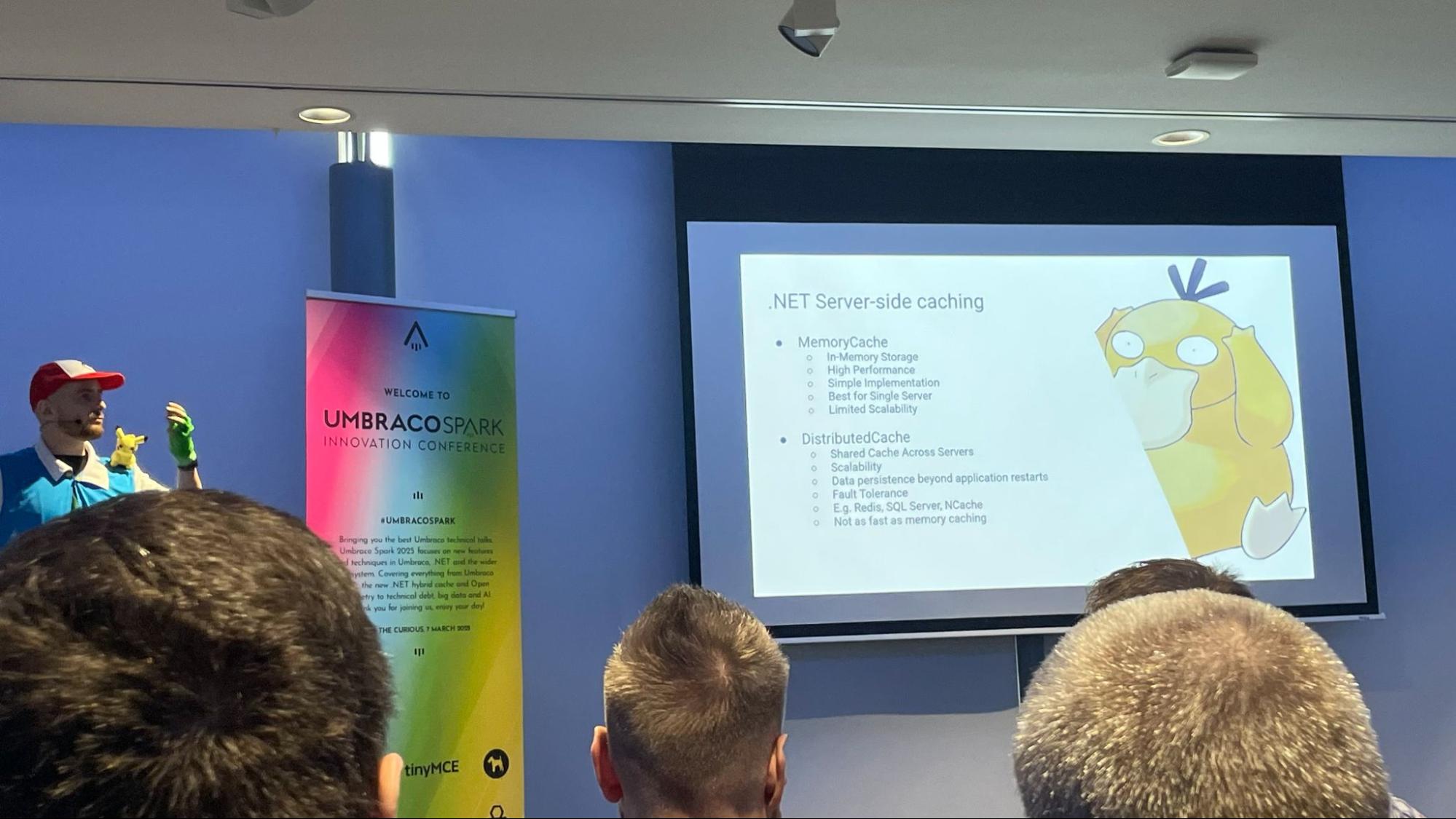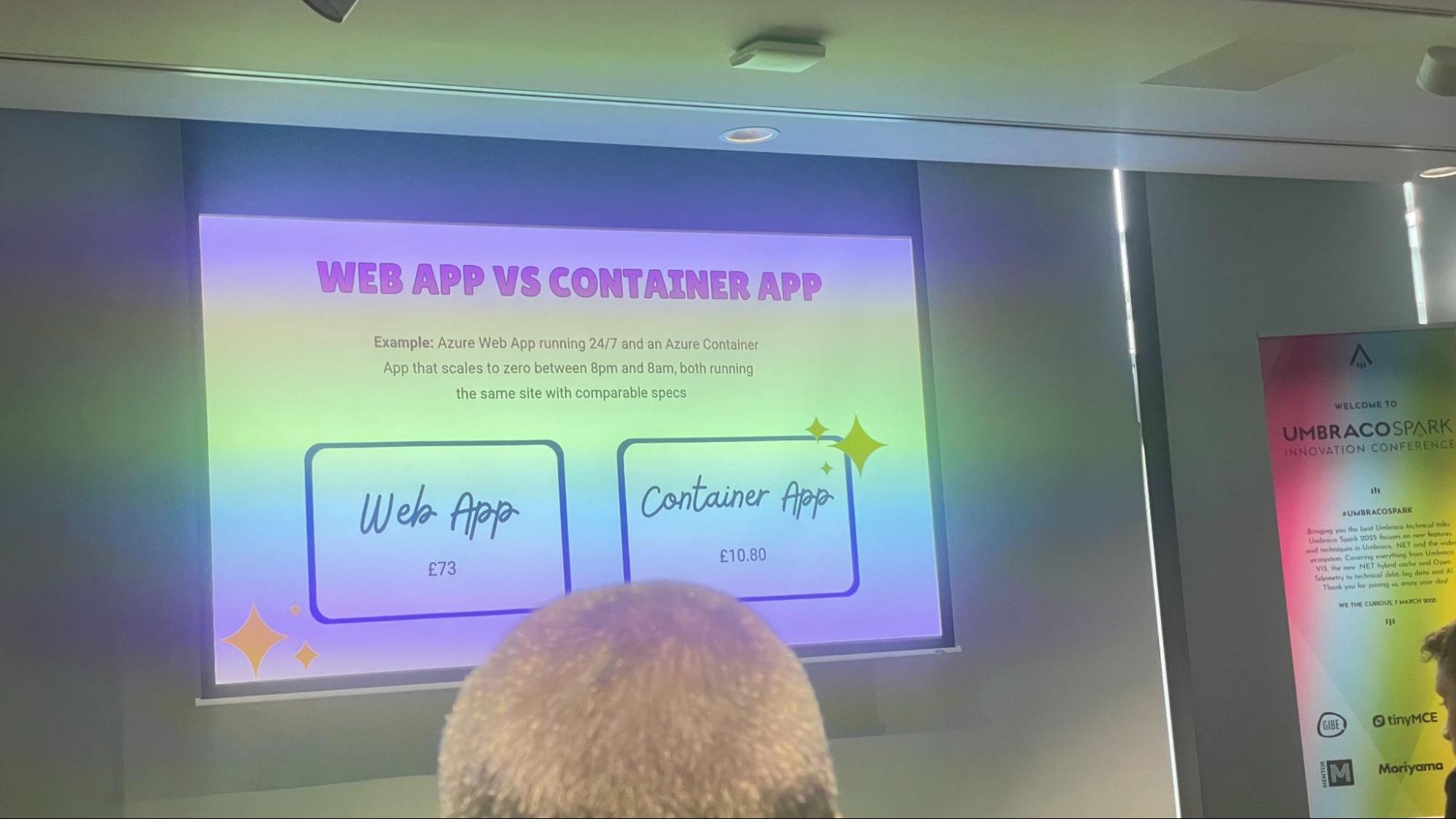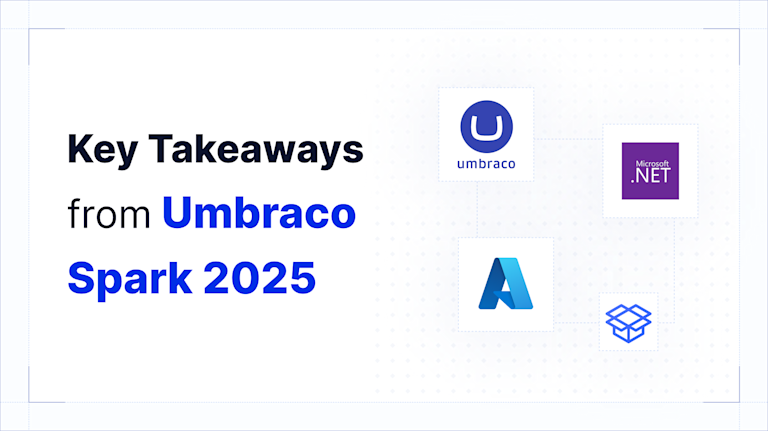Umbraco Spark 2025 on March 7 brought together developers to discuss practical solutions for modern web applications. The focus was on caching, observability, deployment, and search: real challenges faced in everyday development. If you missed it, in this blog we will break down the most important takeaways.
We’ll be hosting an Umbraco Webinar on May 21, 2025, featuring Tech Lead at Proworks and 8x Umbraco MVP Janae Cram, where we'll dive deeper into Making the Most of TinyMCE. Register now to join us for this event.
Pre-Summit Hackathon
Before the summit, developers took part in a hackathon, working on projects that explored new ways to use Umbraco and .NET. It was a great chance to experiment and build something useful in a community of like-minded developers.

The winning project was Georgina’s Lorem Ipsum Package for Umbraco, built in the TinyMCE editor. This tool helps developers generate placeholders text directly within the editor, making content creation testing a lot easier. Congratulations to Georgina for this creative and practical solution!
The hackathon showed how small ideas can turn into valuable tools. It was also a reminder that collaboration and hands-on coding are at the heart of what makes the Umbraco community strong.
Some Talks That Stood Out (Even Beyond Frontend Development)
Technical Neglect vs. Technical Debt
Kevlin Henney introduced the idea of Technical Neglect, a way to rethink Technical Debt. The key point: neglecting maintenance over time is worse than accumulating debt.
He emphasized four takeaways:
- Stop creating legacy code by making intentional, future-proof decisions.
- All code inevitably deteriorates in structure over time.
- Ongoing maintenance is crucial since neglected code will degrade in quality.
- Rework can be expensive, but debt should always be paid back.
For developers working in Umbraco or any platform, these principles serve as a guide to keep codebases manageable and sustainable.
Caching in .NET: Server-Side, Hybrid, and Fusion Cache
Luke’s talk focused on caching strategies in .NET:
- Server-side cache stores data in memory to reduce database load.
- Hybrid cache mixes in-memory and distributed caching for speed and scalability.
- Fusion Cache handles failover and real-time updates.

Umbraco uses Microsoft Hybrid Cache to keep data available across multiple instances, reducing DB queries and latency. If you're using .NET and Umbraco, integrating Hybrid Cache and Fusion Cache can improve performance and lower infrastructure costs.
Observability: Tools and Trends
Carl Sargunar covered how observability tools like Grafana and Prometheus have evolved. Microsoft Aspire was also highlighted as a new observability solution, with its default dashboard being useful for the demo.
However, Aspire was shown as better suited for development environments. For production, Sargunar’s recommended approach was Grafana with Prometheus due to its scalability and reliability.
Azure Containers: Cost and Energy Savings
Imran’s talk focused on how Azure Containers optimize cloud deployments. One of the key benefits is scale-to-zero, which automatically shuts down idle containers, cutting costs and energy consumption by 50%. This feature ensures that resources are used efficiently and that developers are not paying for unused capacity.

For developers, this is important because it means applications can scale dynamically based on demand, eliminating waste and optimizing cloud expenses. It also puts responsibility on teams to build with efficiency in mind, ensuring that infrastructure isn’t idling unnecessarily. Given that the tech industry’s carbon footprint is comparable to the airline industry, adopting these optimizations is part of a larger responsibility movement to develop more sustainable applications. And if sustainability doesn’t matter to a project, the cost savings alone—often a huge percentage—make scale-to-zero a worthwhile strategy.
What’s Next for Umbraco?
Markus Joha shared insights on Umbraco 14 and 15, reflecting on his 20-year journey with Umbraco and the evolution of the platform. He spoke about the Umbraco Retreat, where developers and contributors came together to explore the next steps for the CMS and spend an entire weekend hacking on Umbraco projects. It was exciting to see how collaboration and community-driven development are driving real change.
Key takeaways from his talk:
- The benefits and performance boost from moving Umbraco from Angular to Streamlit and Web Components with TypeScript, modernizing the frontend.
- Changes in architecture and development workflow to improve flexibility and maintainability.
Markus' journey and the insights from the retreat made it clear that Umbraco is not just evolving—it’s setting the stage for long-term sustainability by making everything on the CMS composable. Seeing the thought and effort behind these decisions made us excited for what’s to come in the next versions of Umbraco.
Wrap Up
The talks at Umbraco Spark 2025 were all about practical solutions for modern development, with deep dives into caching, observability, and deployment strategies. The event reinforced the importance of maintaining scalable, efficient applications and highlighted how the Umbraco community continues to innovate and have fun together.
From the hackathon projects to discussions on hybrid caching, observability best practices, and sustainable cloud strategies, there were plenty of valuable insights for developers to take away. Markus Joha’s talk on Umbraco’s future was a clear reminder that the CMS is evolving to be more composable, future-proof, and community-driven.
If you build with .NET, Umbraco, or frontend frameworks, these lessons are worth exploring further. We’re excited to see how these ideas shape the projects of tomorrow.
Don't miss the Umbraco Webinar on May 21, 2025, where you’ll learn more about the TinyMCE package developed by ProWorks for Umbraco 14 onwards.
See you at the next one!
